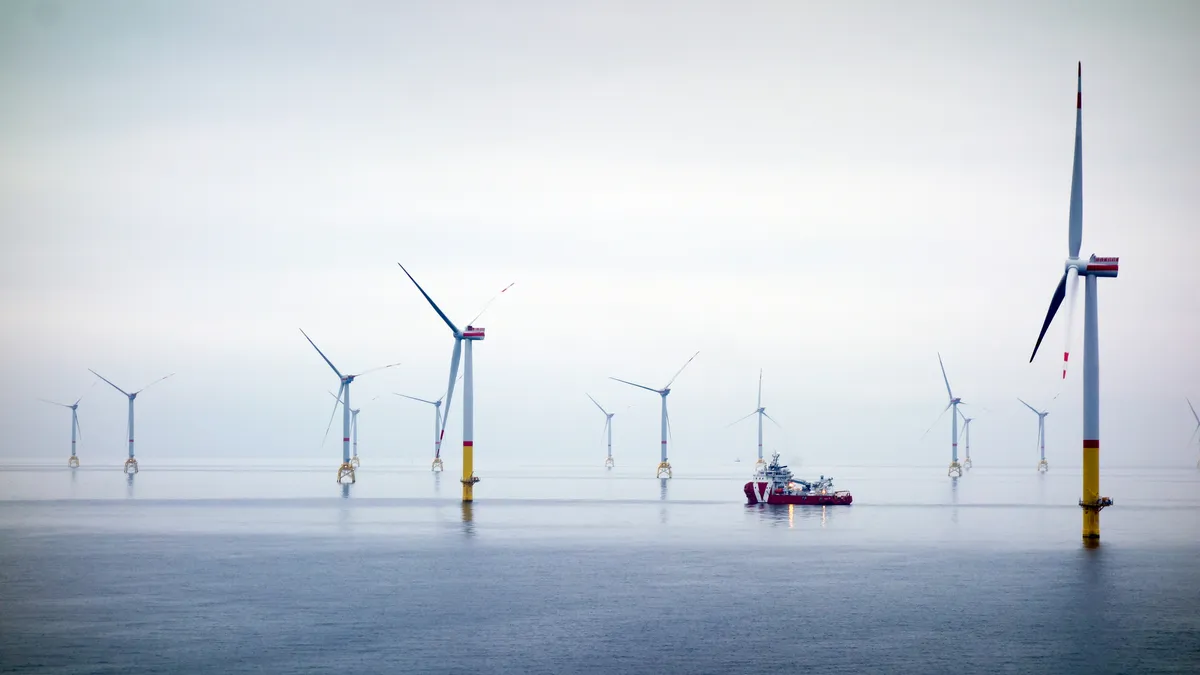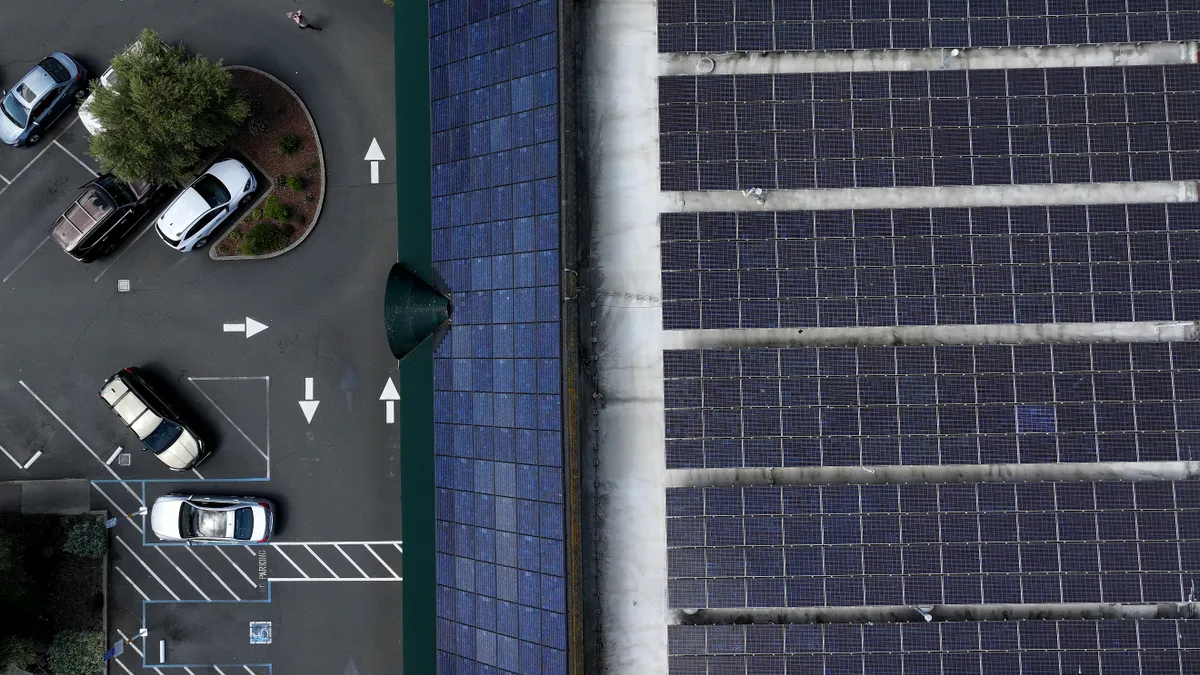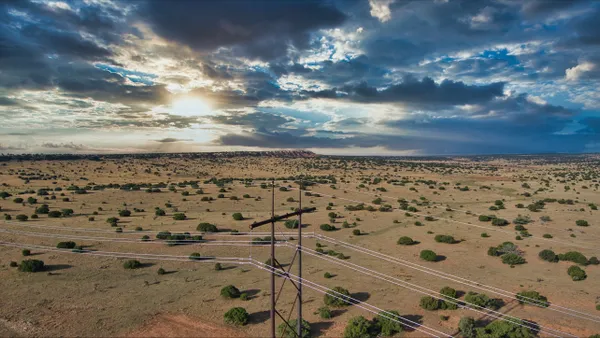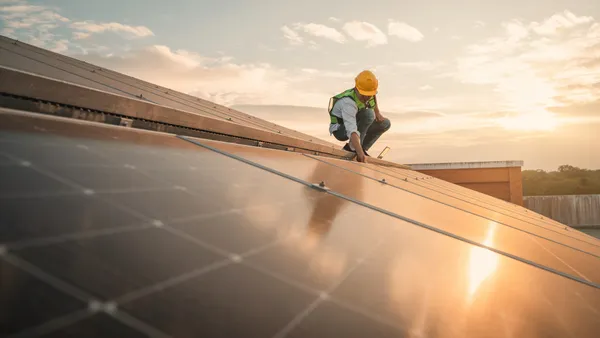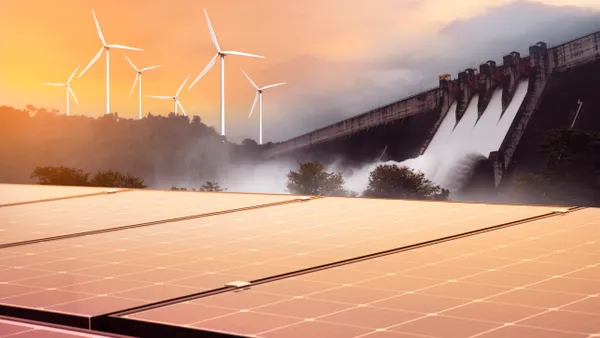As offshore wind expands into new waters, receives unprecedented investments from the Inflation Reduction Act, and is bolstered by the federal Floating Offshore Wind Shot, Utility Dive is launching an offshore wind project and policy tracker to keep readers current on projects under development as well as the actions government bodies are taking to manage this buildout.
To date, 16 U.S. offshore wind farms are under construction — 15 in the Atlantic and one in Lake Erie — and two others have been completed. On the West Coast, the Bureau of Ocean Energy Management sold five leases for $757 million in December. BOEM is also exploring leases in the gulfs of Maine and Mexico.
Due to the deep waters in the lease areas off the California coast, those projects are likely to be the country’s first floating offshore wind farms. Two-thirds of the country’s offshore wind energy potential is in deep waters that necessitate floating wind, but the technology is expensive compared with fixed-bottom turbines.
The Department of Energy’s Floating Offshore Wind Shot aims to lower the cost of that technology’s deployment by more than 70% by 2035 by building out the domestic supply chain and spurring technological innovation. Technological barriers, supply chain constraints and labor shortages are some of the key headwinds facing the industry.
Magnus Frantzen Eidsvold, renewables spokesman for Norwegian energy company Equinor, said in an email that the company has made a “strong commitment” to floating offshore wind, as its purchase of a West Coast lease indicates. The company believes the California offshore wind market “will become a strategic floating market globally,” he said.
In addition to providing tax credits in the Inflation Reduction Act that incentivize offshore wind build-out, the federal government is providing hundreds of millions of dollars in offshore wind-related grants. One example is the Department of Transportation’s program awarding $100 million to port projects that will advance offshore wind development.
The Department of Labor is also working “urgently” to help meet the overall demand for clean energy workers by directing resources toward its registered apprenticeship program. Offshore wind is especially impacted by the renewable industry’s labor shortage, with few workers trained in both wind energy and maritime work.
States are investing heavily in offshore wind as well. Coastal states including Florida, Georgia and Texas have formed offshore wind task forces, according to BOEM, despite not yet having been sited for leasing areas. Among the state policy measures are efforts to establish commissions to study the impacts of offshore wind on state environments and economies.
“U.S. offshore wind development has achieved key momentum, thanks to efforts by states and the federal government to advance offshore wind as part of the climate solution, while protecting biodiversity and ocean co-use,” DOE’s Offshore Wind Energy Lead Jocelyn Brown-Saracino said in an email.
Brown-Saracino attributed the momentum to federal tax incentives and state mandates and said the domestic offshore wind industry is poised to become a significant contributor to complete decarbonization.
States with offshore wind mandates include New York, where state law requires the development of 9 GW of offshore wind by 2035. The state is a leader in the sector, with the sale of five lease areas off its coast and 4.3 GW of capacity expected as a result.
The New York State Energy Research and Development Authority received a robust response to its most recent offshore wind solicitation in January, garnering a “record-setting” total of more than 100 proposals, NYSERDA’s vice president of large-scale renewables, Georges Sassine, said in an email.
“Looking to the future, NYSERDA is leading the coordination of the next New York state master planning effort for offshore wind development that will provide a high-level strategy for developing lease areas in deeper water,” Sassine said.


